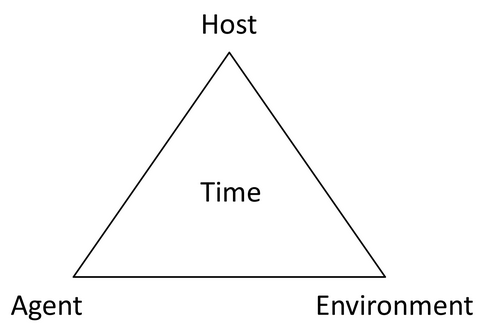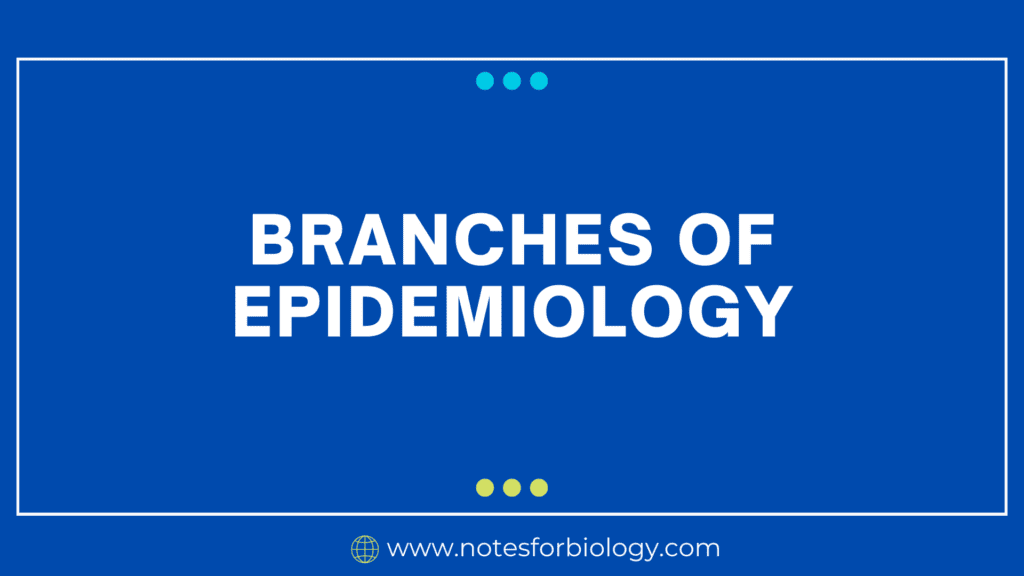What is Epidemiology ?

Epidemiology is the study of the determinants, occurrence, and distribution of health and disease in a defined population. Infection is the replication of organisms in host tissue, which may cause disease.
Data are used by epidemiologists to determine disease risk factors, monitor the transmission of illnesses, assess the efficacy of interventions, and create preventative and control plans. It uses a broad range of academic fields, such as biology, statistics, and social sciences, to investigate how illnesses develop, disseminate, and impact various populations.
Making educated judgements on healthcare interventions, budget allocation, and public health policy need this knowledge.
Table of Contents
Branches of Epidemiology
The vast science of epidemiology includes many subfields that concentrate on distinct facets of illness and wellness. Below is a summary of several important branches:
Descriptive

Emphasis: Outlining the trends and dispersion of health-related incidents within a community.
Techniques: Examining information to determine the who, what, when, where, and why of an illness.
Important Domains:
Individual: Age, gender, ethnicity, profession, financial standing, etc.
Place: The physical location, the urban/rural divide, the climate, etc.
Time: Seasonality, long-term trends, etc.
An example would be researching the prevalence of lung cancer in various age groups within a certain city.
Analytic
Focus: Examining disease etiology and risk factors.
Methods: To investigate relationships between exposures and health outcomes, researchers use experimental studies (randomized controlled trials) or observational studies (cohort, case-control, cross-sectional).
Important Domains:
Tracking a group over an extended period of time to determine who gets sick.
search for prior exposures by comparing individuals with the disease (cases) to those without (controls).
Examining a population’s composition as of a particular moment in time.
A comparison of smokers’ and non-smokers’ rates of heart disease prevalence is one example.
Molecular
Examining how genetic and molecular variables contribute to the onset and course of disease is the main focus.
Methods: Genetic variants, biomarkers, and other biological parameters linked to disease are identified through the use of molecular techniques.
Important Domains:
Investigating the role of genes in illness vulnerability is known as genetic epidemiology.
Evaluation of the effects of exposure to the environment on molecular processes is known as environmental epidemiology.
Examining the correlation between particular genetic variations and elevated risk, for instance
Social
Examining how social, economic, and cultural variables affect health disparities and illness trends is the main goal.
Methods: Examining information on socioeconomic factors that affect health, including housing, education, income, and access to medical treatment.
Important Domains:
Examining disparities in health outcomes between social groups is known as health inequality.
Examining how social stressors affect health in relation to social stress.
Researching the connection between the prevalence of chronic illnesses and poverty.
Clinical
Focus: Making decisions and using clinical practice in accordance with epidemiological principles.
Methods: Evaluating the efficacy and safety of medications, diagnostic procedures, and interventions using information from observational studies, clinical trials, and standard medical records.
Important Domains:
Estimating how an illness will progress.
Assessing how accurate diagnostic procedures are.
Evaluating the advantages and disadvantages of various forms of treatment.
Analysing a novel drug’s effectiveness in treating hypertension is one example.
Environmental
Examining how environmental variables affect health is the main focus.
Methods: Investigating the link between disease incidence and prevalence and environmental exposures (such as air pollution and water contamination).
Important Domains:
Evaluating the health consequences of being exposed to different types of air pollution.
Assessing how contaminated water affects the spread of illness.
Examining the implications of climate change for human health.
Examining the correlation between respiratory issues and particulate matter exposure, for instance.
Outbreak Investigation

Focus : Examining and managing disease outbreaks is the main goal.
Methods: Identifying the origin of an outbreak, figuring out how it spreads, and putting control measures in place using a methodical manner.
Important Domains:
Identifying cases and providing definitions: identifying and describing cases.
Locating people who have come into contact with the illness.
Identification of the source: figuring out where the epidemic started.
Looking into a restaurant epidemic of foodborne illness.
Note: Behavioral , genetic, and occupational epidemiology are some of the various subfields of epidemiology in which specialists could specialize.
Frequently Asked Questions(FAQ)
What is Epidemiology ?
Epidemiology is the study of the determinants, occurrence, and distribution of health and disease in a defined population. Infection is the replication of organisms in host tissue, which may cause disease.
What are the branches of epidemiology?
The branches of epidemiology are
Descriptive
Environmental
Clinical
Behavioral
genetic
What are the methods of Outbreak investigation ?
The methods of Outbreak investigation is to the origin of an outbreak, figuring out how it spreads, and putting control measures in place using a methodical manner.
Related Articles




